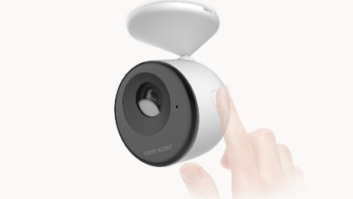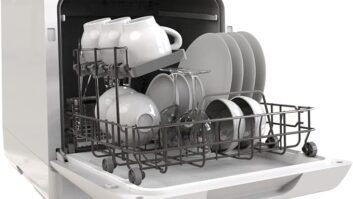WASHINGTON, D.C. — XM Satellite Radio plans to field test prototype satellite radios in early 2001, launch market trials with consumers in a handful of markets by the end of the first quarter, and begin the national rollout in the second quarter, company executives told TWICE.
To achieve its goals, XM is building a 120,000-square-foot headquarters/
studio facility that will include 84 studios, the last of which will be completed in October. Additional studios will be built off-site in major music-industry markets. In July, the company will move its offices from its temporary headquarters to a new building, both in Washington.
The company has also selected international advertising agency TBWA/ Chiat/Day to create a national consumer-awareness campaign. The $100 million campaign will include national TV, radio, print and online advertising, and direct marketing.
As previously announced, the company plans to launch its first geostationary satellite in November or December followed by a second in January or February. To counter line-of-sight obstructions between the satellites and receivers, XM has begun building a network of 1,540 terrestrial repeaters in 70 urban markets. All will be operational by March 15, according to current timetables.
In interviews in which they outlined their launch plans in greater detail, XM executives also explained how they’ll differentiate their programming from rival Sirius Satellite Radio and how they’ll simplify billing and packaging for consumers. They also sketched out planned retail programs (see story above) that they believe will help them capture a major share of the market, whose potential has been estimated by Smart Research at 49 million home, car and portable subscribers.
Smart Research, which did DirecTV’s original demand study, also believes the satellite-radio market could take off faster than satellite-TV service, said Stephen Cook, XM’s senior sales and marketing VP. In a 1999 intent-to-buy survey, Smart Research found that 20.9 percent of consumers would definitely or probably buy a satellite radio, Cook said. That compares with 18.8 percent of consumers who, in a 1992 survey two years before satellite TV’s launch, were similarly inclined to buy satellite-TV service.
To make XM’s launch go as smoothly as possible, Cook said, the company’s first-quarter trials “will simulate a full national rollout as much as possible.” The trials will therefore feature OEM and aftermarket car radios, and Cook hopes, home and portable radios.
Like Sirius, however, XM expects most of its subscriptions to come from car radio purchasers.
XM’s terrestrial repeater plans call for 90 percent of the company’s 1,540 repeaters to be positioned on rooftops, with the remainder on existing towers, in major population areas and along commuter routes, said John Wormington, senior engineering and operations VP.
Although site selection began last fall, as of late May, leases for only 700 sites were signed and only 10 repeaters were built, Wormington said. But the March 15 completion date is nonetheless feasible because it takes only nine months to put a site into operation from the time of location selection, Wormington said. Site selection began last fall.
Each of the 70 repeater markets covers a broad swath of territory, Wormington noted. The New York City market, for example, will cover large portions of New York state, New Jersey and Connecticut.
Through its hybrid network of satellites and repeaters, XM promises at launch to deliver almost 50 music channels, most produced directly by XM, and almost 50 information and talk channels. About a dozen of the music channels will be commercial-free. All other channels will feature five to six minutes of commercials per hour, significantly fewer than the average 17 to 18 minutes delivered by terrestrial stations, Cook said.
In contrast, rival Sirius Satellite Radio plans 50 commercial-free music channels and 50 limited-commercial talk and information channels.
Initially, the vast majority of XM’s revenue will be from subscriptions, but in six to seven years, it will be 50/50 [advertising/subscription revenue],” Cook said.
Besides their approach to commercials, XM and Sirius service will differ in another way, said Lee Abrams, XM’s senior VP of content and programming. XM is building more studios than its rival, he pointed out, because “we will be like 100 living radio stations. Each music or talk `station’ that XM creates will have its own program director and on-air talent.” On the other hand, Abrams noted, Sirius’s music channels are “more like the DMX model, which is music-intense.”
Despite the DJ chatter and music-channel commercials, Abrams said he believes “people who listen to CDs will listen to them far less” when XM service is launched. People “listen to CDs because their favorite music isn’t being played on the radio,” he explained, “and our music stations are fine-tuned. There will be something there for everyone to listen to.”
XM’s lineup will include four country formats and four classic rock stations: one for the Dylan era of the ’60s, one for the Led Zeppelin era of the ’70s, one for the Police era of the ’80s, and another for the ’90s, Abrams noted. A music channel dedicated to each decade from the ’50s to ’90s will feature soundbites that evoke those eras.
For its non-music channels, XM has teamed up with content partners such as BBC, Black Entertainment Television, C-Span, NASCAR and USA Today.
Some of the non-music channels will bear a content partner’s brand name, but even in those cases, Abrams said, the companies will create content exclusively for XM at XM’s direction. In addition, their feeds will flow through XM’s studios so XM can add its own material, such as promotional spots.
Other content providers will deliver exclusive content, but their content will often be read by XM studio personnel.
Although XM plans plenty of channels, it doesn’t plan to overburden subscribers with programming options. At launch, only one programming package will be offered, with “close to 100 channels for $10/month,” Cook said. Family-plan discounts might be offered at that time for multiple car and home subscriptions. Perhaps later, premium channels will be offered at extra cost.
Subscription costs will probably be billed to a subscriber’s credit card or packaged with a new car lease or loan.













